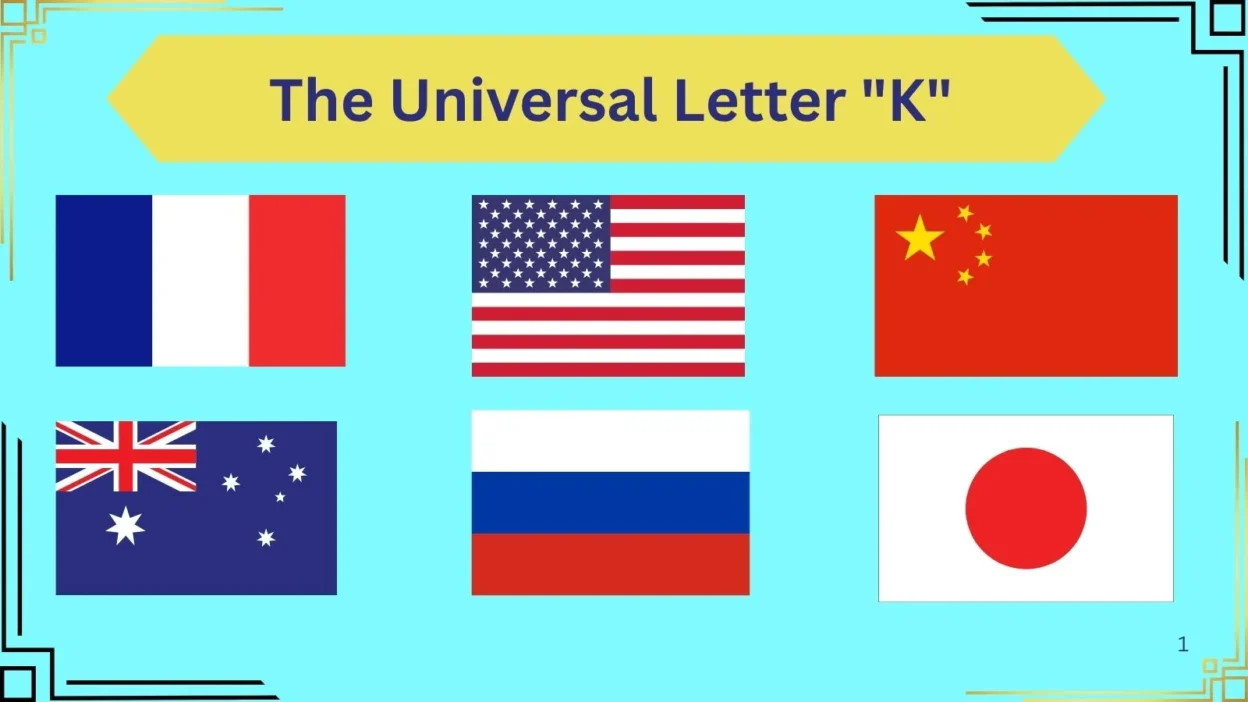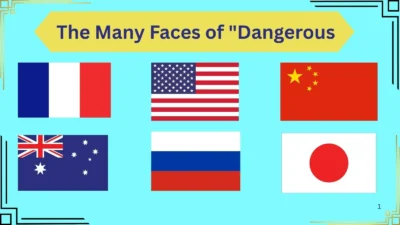if you’re learning English, the letter“K” can be a bit confusing because sometimes it’s written but not pronounced — like in the word “know” or “knife.1
” “K” is the eleventh letter of the English alphabet and usually makes a strong, clear sound as in “kite” or “king.” New learners often struggle with silent “K” words or mix it up with the letter “C,” since both can produce similar sounds. Learning when “K” is silent and when it’s not will help you improve both your pronunciation and spelling.
European Languages
- Albanian – K (pronounced like English “k”)
- Basque – Ka
- Belarusian – К (pronounced “kah”)
- Bosnian – K (“ka”)
- Bulgarian – К (“kah”)
- Catalan – K (“ka”)
- Croatian – K (“ka”)
- Czech – K (“ká”)
- Danish – K (“kå”)
- Dutch – K (“kaa”)
- Estonian – K (“kaa”)
- Finnish – K (“koo”)
- French – K (“ka”)
- German – K (“kah”)
- Greek – Κ (Kappa) (“kah-pah”)
- Hungarian – K (“ká”)
- Icelandic – K (“kaw”)
- Irish – K (rare, mostly in loanwords)
- Italian – K (“kappa”)
- Latvian – K (“kā”)
- Lithuanian – K (“ka”)
- Macedonian – К (“kah”)
- Norwegian – K (“kå”)
- Polish – K (“kah”)
- Portuguese – K (“cá” or “capá”)
- Romanian – K (“ka”)
- Russian – К (“kah”)
- Serbian – К (“kah”)
- Slovak – K (“ká”)
- Slovenian – K (“ka”)
- Spanish – K (“ka”)
- Swedish – K (“kå”)
- Ukrainian – К (“kah”)
- Welsh – K (rare, mostly in loanwords)
Asian Languages
- Arabic – ك (Kāf) (pronounced “kaaf”)
- Armenian – Կ (Ke) (“keh”)
- Azerbaijani – K (“ka”)
- Bengali – ক (Kô) (“kaw”)
- Burmese – က (Ka) (“kah”)
- Chinese (Mandarin) – K (“kè” in Pinyin)
- Filipino (Tagalog) – K (“ka”)
- Georgian – კ (Kan) (“k’ahn”)
- Hindi – क (Ka) (“kah”)
- Indonesian – K (“ka”)
- Japanese – ケ (Ke) (“keh”)
- Kannada – ಕ (Ka) (“kah”)
- Kazakh – К (K) (“kah”)
- Khmer – ក (Kâ) (“kaw”)
- Korean – ㅋ (Kieuk) (“kee-uk”)
- Kurdish – K (“ka”)
- Malayalam – ക (Ka) (“kah”)
- Marathi – क (Ka) (“kah”)
- Mongolian – К (K) (“kah”)
- Nepali – क (Ka) (“kah”)
- Persian (Farsi) – ک (Kāf) (“kaaf”)
- Punjabi – ਕ (Kakka) (“kak-ka”)
- Sinhala – ක (Ka) (“kah”)
- Tamil – க (Ka) (“kah”)
- Telugu – క (Ka) (“kah”)
- Thai – ก (Kor Kai) (“kaw kai”)
- Turkish – K (“ke”)
- Urdu – ک (Kāf) (“kaaf”)
- Uzbek – K (“ka”)
- Vietnamese – K (“ka”)
African Languages
- Amharic – ከ (Kä) (“keh”)
- Hausa – K (“ka”)
- Swahili – K (“ka”)
- Xhosa – K (“ka”)
- Yoruba – K (“ka”)
- Zulu – K (“ka”)
🎉 Conclusion – More Than Just a Letter
The humble “K” is a testament to humanity’s shared yet divergent linguistic creativity. It can be a chicken egg in Thai, a glottal pop in Georgian, or a borrowed guest in Irish—proof that even the simplest letters carry worlds of history and nuance. Next time you scribble a “K,” remember: you’re wielding a shape that has morphed across millennia, from Egyptian hieroglyphs to Unicode. So, which “K” is your favorite? 🤔
Meaning, Use, and Why It Matters in Everyday Communication
🧠 Why Do People Search for the Word Introduction?
When someone types the word “Introduction” into a search engine, they’re usually looking for more than just a definition. They may be:
- A student preparing a presentation or essay.
- A professional writing an email or report.
- A language learner trying to understand everyday English usage.
- Someone meeting new people and wondering how to introduce themselves.
In every case, they want clarity, confidence, and connection. This blog is here to help. 😊
📚 What Does Introduction Mean?
The word “Introduction” comes from the Latin word introductio, which means “a leading in.” It’s all about starting something new—whether it’s a conversation, a speech, or a chapter in your life.
Here are a few key meanings:
- A Beginning: It marks the start of a book, article, speech, or movie. Example: The introduction to the novel grabbed my attention immediately.
- A Formal Presentation: It’s used to present one person to another. Example: Let me give you a quick introduction to our team.
- A Way of Familiarizing: It refers to giving someone an overview or insight into something new. Example: This course offers an introduction to graphic design.
🗣️ How to Use Introduction in Real Life
To make it easier for you, let’s look at some practical ways you can use the word “introduction” in daily conversation, writing, and formal settings.
1. In Personal Conversations
- “Hi, I’m Sarah. Just wanted to do a quick introduction—I’m the new neighbor.”
- “That was a great introduction you gave during the meeting!”
2. In Emails or Letters
- Formal: “Please allow me to give a brief introduction of myself before we begin.”
- Casual: “Just a quick intro—I’m Alex, and I’ll be handling your project.”
3. In Public Speaking or Writing
- “Today, I’ll start with a short introduction before diving into the main topic.”
- “The book’s introduction gave a helpful summary of what to expect.”
✨ Why Mastering Introduction Matters
Understanding how and when to use introduction boosts your:
- ✅ Confidence when meeting new people
- ✅ Clarity in writing or speaking
- ✅ Professionalism in formal settings
- ✅ Politeness in everyday situations
Whether you’re giving a self-introduction or writing an introduction to a blog post (like this one 😉), using the word correctly sets the tone for everything that follows.
📝 Quick Tips for Using Introduction
| Situation | Phrase Example |
|---|---|
| Meeting someone | “Nice to meet you. I’m [Your Name].” |
| Writing an email | “Allow me to introduce myself…” |
| Starting a paper | “This essay begins with an introduction to…” |
| Talking about a topic | “Here’s a brief introduction to digital marketing.” |
🌍 In Other Languages
Understanding how “introduction” is used globally can be helpful:
- French: Introduction
- Spanish: Introducción
- German: Einführung
- Urdu: تعارف (Taaruf)
- Arabic: مقدمة (Muqaddimah)
- Hindi: परिचय (Parichay)
Knowing these translations is great for multilingual communication.
🎯 Conclusion:
The word introduction may seem simple, but it carries a lot of power. It opens doors, starts relationships, and lays the foundation for clear communication. Whether you’re introducing yourself, a topic, or an idea—how you begin makes all the difference.
So the next time you search for “introduction,” know this: you’re not just learning a word—you’re learning how to start strong.
💬 Practice Sentence:
“Hello! My name is Talha, and I’d like to give a quick introduction before we begin.”



